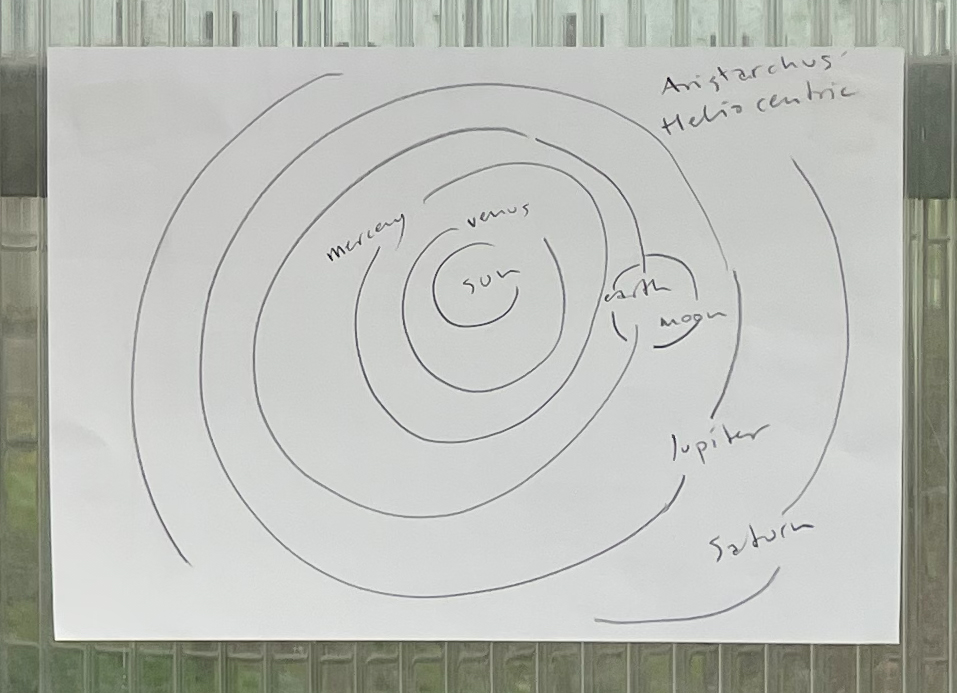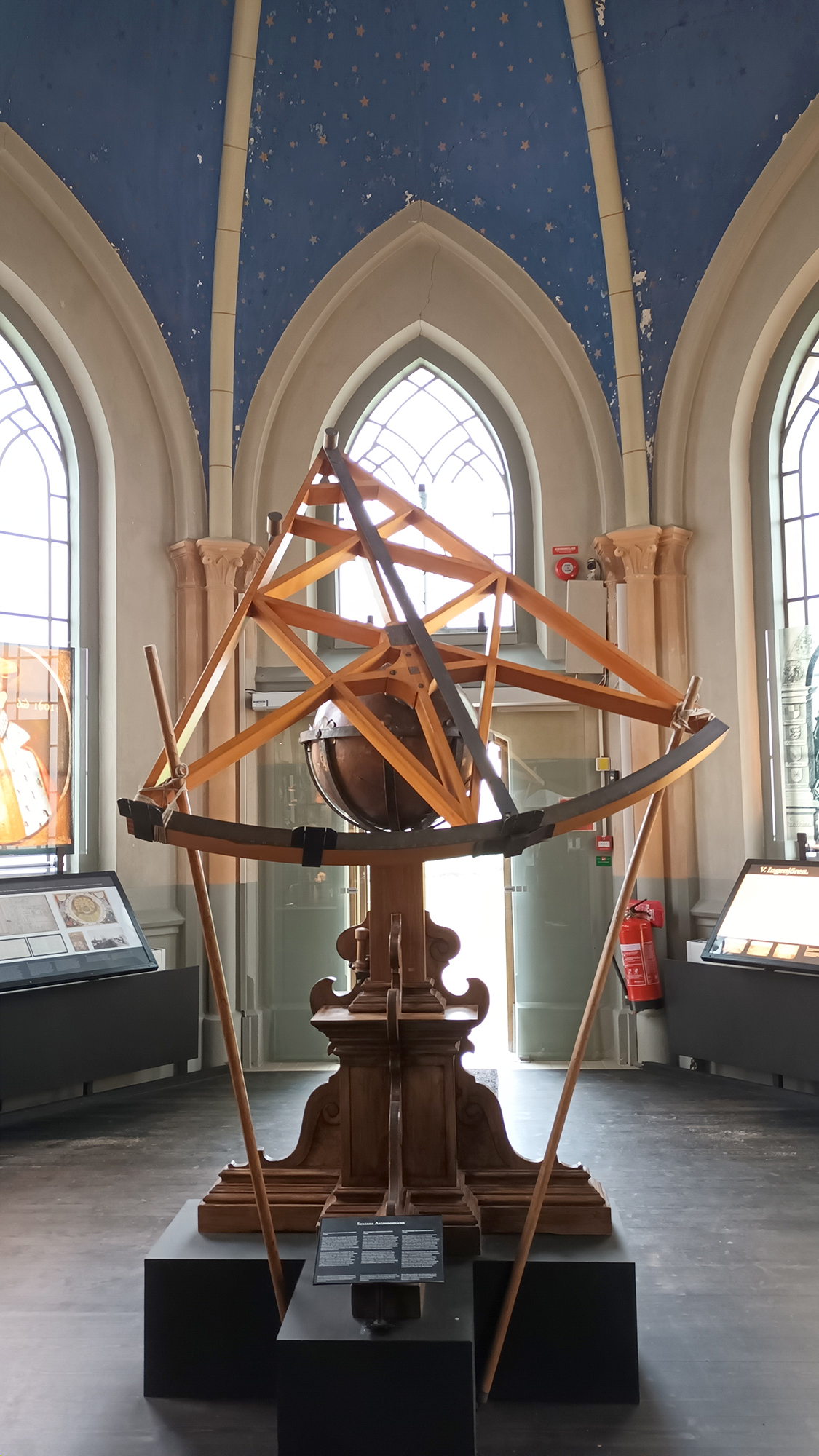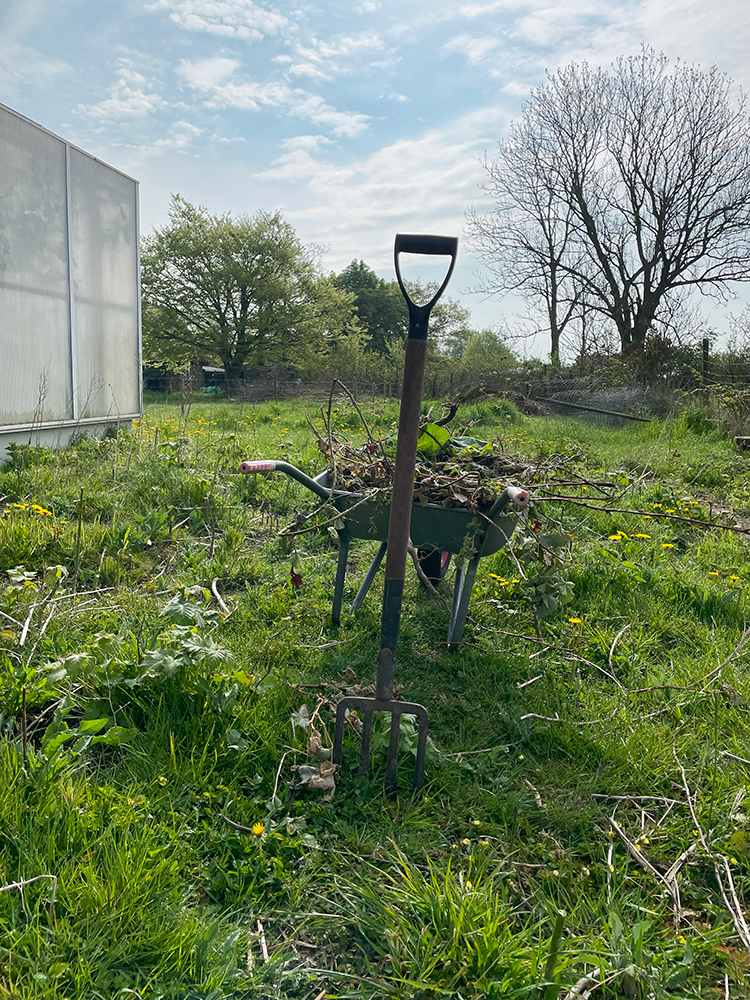future/tense
Within and Beyond - Embodied Planetary Cycles
Sara Rossling, Rebekka Elisabeth Anker-Møller and Christopher Sand-Iversen


Workshop Weekend on Ven, 3-5 May 2024
The research project Within and Beyond - Embodied Planetary Cycles, conceived in collaboration between SixtyEight and curator Sara Rossling, brings together artists, researchers and curators to share knowledge and develop work that reflects on the circadian rhythm, seasonal cycles, and how these affect our bodies and behaviours. The project was launched with a workshop weekend on the island of Ven, kindly hosted by artist Åsa Sonjasdotter, to which the curatorial team also invited the Copenhagen-based artist Anu Ramdas and the Malmö-based artist Helena Fernández-Cavada. We were happy to spontaneously include Berlin-based artist Guy Hatzvi, formerly of The Metabolic Studio, whose contributions to our conversations were much appreciated.
Today it seems perfectly natural to us that the Earth orbits the sun once a year, leading to the cycle of the seasons, and rotates around its own axis once a day, causing day and night.
But we have not always known this, and the journey to knowing it was long, involved competing theories, and was affected by deep-seated human ideas that strained against the measurable.
Hesiod's (c. 700-650 BCE) earth, Gaia, was flat and surrounded by a sea or river called Okeanos. Above the earth was a semi-spherical sky, separated from the earth. Below the earth was a kind of symmetrical pole of the sky, the underworld, Tartara.


Some Pythagoreans, such as Philolaus (c. 470–385 BCE) were willing to move the Earth from what seemed to be its natural position at the centre of the universe. Accordng to Philolaus, there was instead a 'central fire' around which the planets and stars rotated. Since the Pythagoreans understood fire rather than earth to be the most valuable of the four elements, it perhaps seemed reasonable to place fire at the centre. Philolaus's universe is unusual in not being geocentric, but neither was it heliocentric, since the Sun also rotates around the central fire, on the other side of the Earth.
Fundamental to Aristotelian cosmology was the division of the universe into two strictly separated regions: the sublunar, consisting of the Earth and the region between the Earth and the Moon; and the supralunar, consisting of the planets and stars from the Moon and beyond. His system built on that of Eudoxos (c. 391-338 BCE) and the idea that the planets move on even, concentric shells with the Earth at the centre. After Aristotle (c. 384-322 BCE), learned discourse seldom questioned that the world is round. But he did not believe that it rotated; the movement of rotation was only natural for the other celestial bodies. To explain this he added to the supralunar region the aïther, the quintessence or fifth element. The Earth consisted only of the usual four elements, earth, water, fire and air.


Aristarchus (c. 310-230 BCE) presented the first known heliocentric model, with the Earth revolving around the Sun once a year and around its own axis once a day. He was influenced by the concept of a central fire presented by Philolaus (c. 470–385 BCE), but Aristarchus identified this with the Sun and arranged the other planets in their correct order of distance around the Sun. Knowledge of the heliocentrism of the solar system was threfore attained quite early, but was repressed. Aristarchus' ideas were often rejected in favour of the geocentric models of Aristotle and Ptolemy, in part because Aristotle's works in general enjoyed such high esteem with the theologians of the Middle Ages, and in part because the Christian Church had an interest in placing Man at the centre of the universe.
Xenarchus, who was alive around 50 BCE, attacked two of Aristotle's fundamental principles in writing, namely the aïther or fifth element, and the circular movement of the celestial bodies. He saw the aïther as superfluous, and denied that bodies such as planets and stars must necessarily move in eternal circles as part of their nature. Neverthless, more than 1700 years would pass before such ideas could be proved by empirical observation and were accepted.


In 1572, Tycho Brahe observed what he thought was a new star in the constellation Cassiopeia - we now know that it was a supernova. Discoveries such as these caused the ancient idea that the celestial sphere was unchanging to be seriously questioned.

In the late 1500s, Tycho Brahe published a model of the universe knwon as the Tychonian system. It combines the heliocentric Copernican system with the geocentric Ptolomaic system. Brahe had read Copernicus' geocentric theory, which was heretical and which Copernicus didn't publish in his own lifetime. Brahe's system proposes an integration or compromise between the ancient system underwritten by the Church, and the more recent system supported by empirical observation. The result is a so-called geoheliocentric model in which the Sun revolves around the Earth, while the remaining planets revolve around the Sun. Thus, the Earth could remain at the centre of the universe.







Åsa Sonjasdotter's research into the many so-called 'peasant' varieties of various common crops, which used to be grown on the island of Ven and the Swedish mainland.
On the basis of her research, she has a practice of planting and cultivating older seed varieties that still survive, including in some cases thousand-year-old emmer wheats, among others. The three pigs have been brought in to forrage on the land which will used - by churning up the soil, aerating and fertilising it, they help to prepare it for the demands of sustaining a crop.



Anu Ramdas presented her work with the attempt to draw the experience she has of her internal self or soul as coloured shapes when meditating. Having experienced this spontaneously one day, she established it as a practice, drawing the 'internal light', or Lucem Interiorem as the works are called, every day. Each day the colours and the shapes are different, and never repeat themselves.
The ancient idea of psyche or anima is that of an animating force in the universe, much like that thought to exist in the human body. Plato (c. 427–348 BCE), for example, adhered to idea of the 'soul of the world', conceiving of the cosmos as a living being. The idea entered medieval Christian culture as the anima mundi and survives in the work of later European philosophers of the Enlightenment and Romantic periods, as well as in various spiritual traditions.
Rebekka Elisabeth Anker-Møller presented several strands of her curatorial practice which converge on the topic of spirituality and the relationship to the physical world, as well as her ongoing interest in the agency of matter as formulated in discourses such as New Materialism. Among other projects presented was her earlier research exhibition and project at SixtyEight, Above the Sky, Beneath the Ground, from 2021, encompassing two exhibitions, a public programme of artist talks, and a symposium which included presentations by philosophers, spiritual thinkers and artists.


Sara Rossling presented a series of reflections on topics which the project Within and Beyond - Embodied Planetary Cycles might take up as it develops over the coming period. These include the effect of darkness on our patterns of sleep and metabolism, and in extension of this, considerations about the role of work and night shifts. The increasing amount of night work in Western societies cannot be dissociated from issues of social class, and within the issue of class from that of ethnic background.
She also presented the exhibition When the Sun Goes Down, which she curated at Gallei CC in Malmö in February 2024, featuring the works of Assem Hendawi, Oona Libens, Lisa Tan and Joline Uvman. Apart from standing on is own as a fully formed exhibition, it also functioned for her as a preliminary investigation of some of themes we will be addressing in this proejct.
